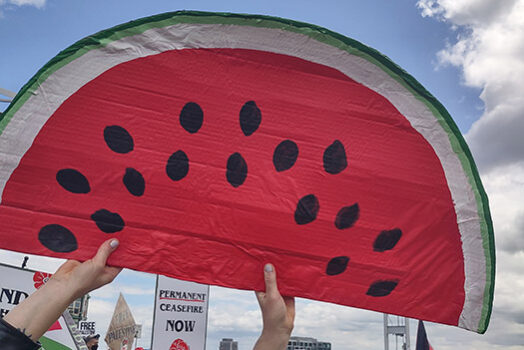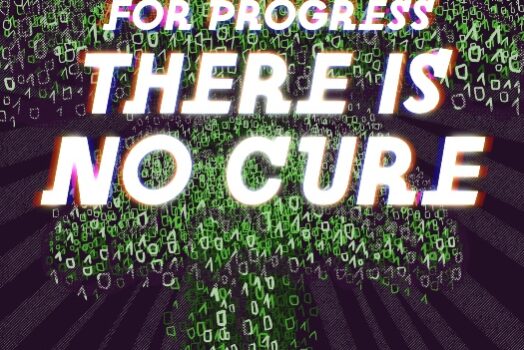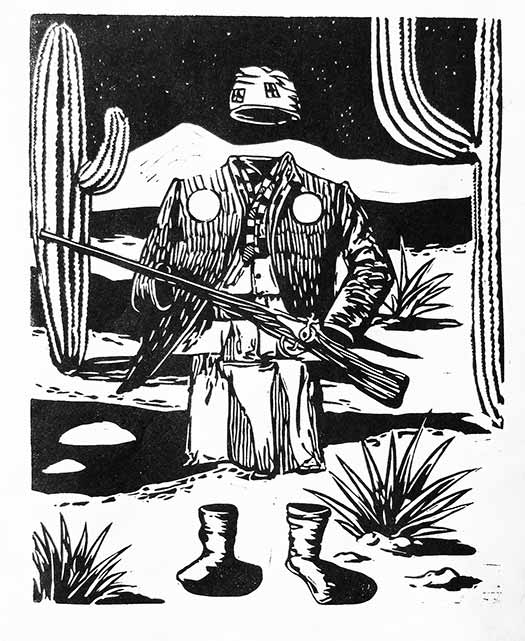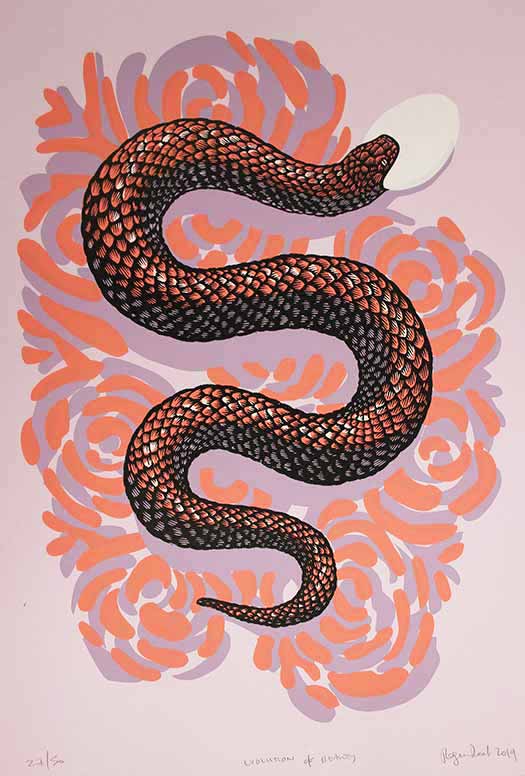
Last year two species of Rhinoceros went extinct. The Vietnamese sub-species of the Javan Rhino and the Western Black Rhino of Africa are gone forever, casting no more shadows. Their lengthy presence on earth was snuffed out not by any phenomenon of natural pressure, but by the real-world consequences of human beliefs.
The world’s rhinos are dwindling faster now than ever before, pushed to the utter brink by the adherents and practitioners of Traditional Chinese Medicine (TCM). The burgeoning purchasing power of the human populations of China, Korea and Vietnam has led directly to a surge of growth in the number of rhinos of all species being poached for their horns. The horns are used in therapies for colds and minor flus, and not, as is often mistakenly stated, as aphrodisiacs. Regardless of the purpose, those in Southeast Asia and the diaspora who are currently paying equivalents of upward of $2000 per pound are being fleeced: Rhino horn is composed of keratin and nothing more, just as are human hair and fingernails. Until quite recently there was additional poaching pressure from nations on the Arabian peninsula, where rhino horn was traditionally made into the handles of the ceremonial daggers that represent the passage of boys into manhood. The massive increase in price and conservation pressure have reduced that demand, and almost all horn is now traded to Asia.
The presence of Rhino horn in the TCM pharmacopoeia has a long history, which has hindered efforts to combat its’ use. All trade, use, and possession of rhino horn products is currently illegal under CITES, the international convention on the trade in endangered species, but legal niceties haven’t prevented the extinctions we saw last year, nor the exponential increase in poaching seen, for example, in South Africa: more than 300 rhinos in 2010, more than 500 in 2011. If this trend continues, all rhinos will be extirpated from the earth within a very short space of time, ending an evolutionary lineage stretching millions of years into the vastnesses of global history, and all because someone had a sniffle.
This makes me positively apoplectic, and when I think too deeply on it I foam with desperate, useless rage. How can you combat a belief that infects so many, most of whom are so far removed from the problem they are unwittingly causing? Some have suggested that rhinos should be farmed for their horns, which grow back after they are severed. In addition to the implications that idea has for the future of wild rhinos of any sort, it’s come far too late: the current coterminous trend arrows of horn price and rhino rarity follow the same exponential curve, which has a clear endpoint of absolute zero.The poaching crews have helicopters, sophisticated weaponry, and night-vision equipment, and the rangers and conservationists in countries that still have rhinos are hopelessly outmatched- going after poachers successfully is an economic impossibility in most locations. The real problem is that people believe that the horn actually has the properties that TCM ascribes to it. This is where the Rhino Rescue Project comes in.
The Rhino Rescue Project of South Africa has come up with a novel idea to combat poaching, an idea so crystalline in its purity and power that it almost seems like magic: poison the horns.
When it’s put like that it seems cruel and vindictive, and the idea was indeed born of grief and anger, in the aftermath of the poaching of a cherished rhino named Queenstown. They took it further, however, by working with veterinary scientists to develop a technique for impregnating rhino horns with anti-parasite compounds (like a sheep-dip or flea-collar) combined with a powerful UV dye. Like other compounds of the sort, these chemicals are mildly toxic to humans, a toxicity that increases according to the size of the dose. The stroke of genius involved here is that the treatment works best as an idea: if consumers in Asia learn that there is a possibility that the high-cost medicines they’ve been purchasing stand to make them more ill, they might steer away from them. If it’s impossible to tell which horns have been impregnated and which have not, then all horns become potential sources of expensive poison. By sowing seeds of worry and doubt, this idea goes further to combat poaching than could any paramilitary or lobbying campaign.
I interviewed Lorinda Hern of the Rhino Rescue Project recently via email.
Please describe the facility that you are a part of, and what your history and relationship is with the Rhinos that you treat with this method. A brief background on yourself and others involved in the project would be useful.
The Rhino & Lion Nature Reserve is a private game reserve in the Cradle of Humankind World Heritage site. My father purchased this property 30 odd years ago and turned it from a derelict old dairy farm into a nature reserve. I have known all the rhinos on the reserve since childhood. The first two came there almost 23 years ago from the Berlin zoo, and the third, called Queenstown, arrived shortly after. We lost Queenstown in a poaching incident in 2010 and this was the impetus for us to start developing or looking into others who were involved in horn treatments. This was how we came across Dr. Charles van Niekerk, who was researching the potential of using rhino horns as a depot for ectoparasiticides, and so, in very broad terms, the Rhino Rescue Project team was established.
Where did this idea come from? Have there been other attempts to render the horn unfit for commercial trade?
Before us, there had been no other initiatives to render the horns useless for trade. The closest alternative was dehorning, but it was used largely to deter poaching and not necessarily to make horn less attractive to their target markets (although one could argue that a “dehorned” horn which is not completely “whole” would not be suitable for ornamental use, for example. In this way, the two methods are similar.)
Can you describe briefly how you came to develop the dye impregnation technique that you are using on living Rhino horn? Did you work from technologies already available or were you starting from scratch?
We were lucky enough to come into contact with Dr. Van Niekerk mentioned above, who along with colleagues both here and overseas were quite far along in their studies into the internal composition of rhino horn and whether these horns could be infused with specific compounds. We were particularly interested in the use of ectoparasiticides, as our animals are in a “captive” environment with only a small population of ox-peckers (birds that feed on the ticks and other arthropods that infest rhinos). In the wild, rhinos would have numerous Ox-peckers in the surrounding area. Without them, rhinos are particularly susceptible to parasitic infestations. The selections of depot ectoparasiticides for inclusion in the treatment compound are registered for use in animals and only Ox-pecker friendly and Vulture safe products have been used. The use of the horn as a vehicle for anti-parasitic compounds was of interest to us, in part because (like products used on domestic pets to protect them against ticks and fleas) these products are registered as being unfit for human consumption and could potentially deter our animals from being poached.
What are some examples of the criticism you’ve received for implementation of this strategy, and of the potential health consequences for end-users of horn products? Have you had any response from people who are involved in promotion of the horn as a medicinal item?
We have had no response from anybody involved in the trade of rhino horn. We expected none – trade in, purchase and consumption of rhino horn and rhino horn products are all illegal activities and individuals involved know better than to cause a stir, I suppose. People have questioned whether it is our intention to kill people – it most certainly is not. In addition to the treatment compound we infuse the horn with a neon pink indelible (indestructible) dye to warn consumers that the horn has been contaminated. The dye is bright pink and clearly seen inside a treated horn which means that there can be no doubt about whether a horn is treated or not. It is similar to products used in the banking industry and has the added benefit that it is visible on an x-ray scanner. Thus a treated horn, even when ground to a fine powder, cannot be passed through security checkpoints unnoticed. The doses of the compounds used are enough to create a great deal of discomfort in the end user, but not to kill anybody. We made 100% sure of this. The treatment is toxic, but not lethal. Symptoms include, but are not limited to vomiting, convulsions and nervous symptoms.
Have you had any interest from the broader field of conservationists, at local, national and international levels, regarding this strategy? What do other groups that focus on Rhino conservation think, as a whole?
This industry is, sadly, one of the most fragmented I’ve ever come across. As much support as we’ve received, it is countered by equal levels of opposition. There is a fairly large number of individuals in the industry who are in favour of legalising trade in rhino horn, and from this camp we have received much opposition. However, public opinion has proven to be firmly in our camp.
How feasible would it be to implement this strategy on a mass scale? Would it be possible, in your opinion, to formulate a legislative agenda promoting the universal treatment of Rhinos with this method? What are the costs involved, and can they be reduced to increase the reach and feasibility of the strategy?
Of course, as with any strategy to be implemented on a large scale, economies of scale drive prices down. Even now, the treatment is affordable – at approximately r15000.00 ($1800) per rhino (which includes the entire procedure from immobilization to DNA sampling, microchipping and tracking technology) which protects an animal for up to four years, we think it’s a small price to pay. We have been trying for quite some time to arrange for a meeting with government to propose this strategy, but to no avail unfortunately.
How disruptive is the treatment to Rhinos? It must be difficult and expensive to reach broadly distributed animals; how can this treatment be extended to large numbers of at-risk animals?
It’s actually not invasive at all – it was our goal to find a less invasive procedure than dehorning, which often affects animals’ behaviour and social structures negatively. We wanted to do something that would allow the animal to keep its horn, so we opted for this approach. Of course it would be difficult to treat every single rhino, but, according to us, you don’t have to. As soon as you’ve treated some rhinos in a population, you will manage to create enough confusion in the mind of a potential poacher to deter a poaching on your property.
How might the fact of this treatment be publicized in countries where there is significant demand? Is this a part of your agenda?
It is absolutely part of our agenda, if we can get past the censorship issues in these countries. At the moment the best we can do is to promote the treatment locally and via social networking and hope that by word-of-mouth the message spreads enough to make a difference.







